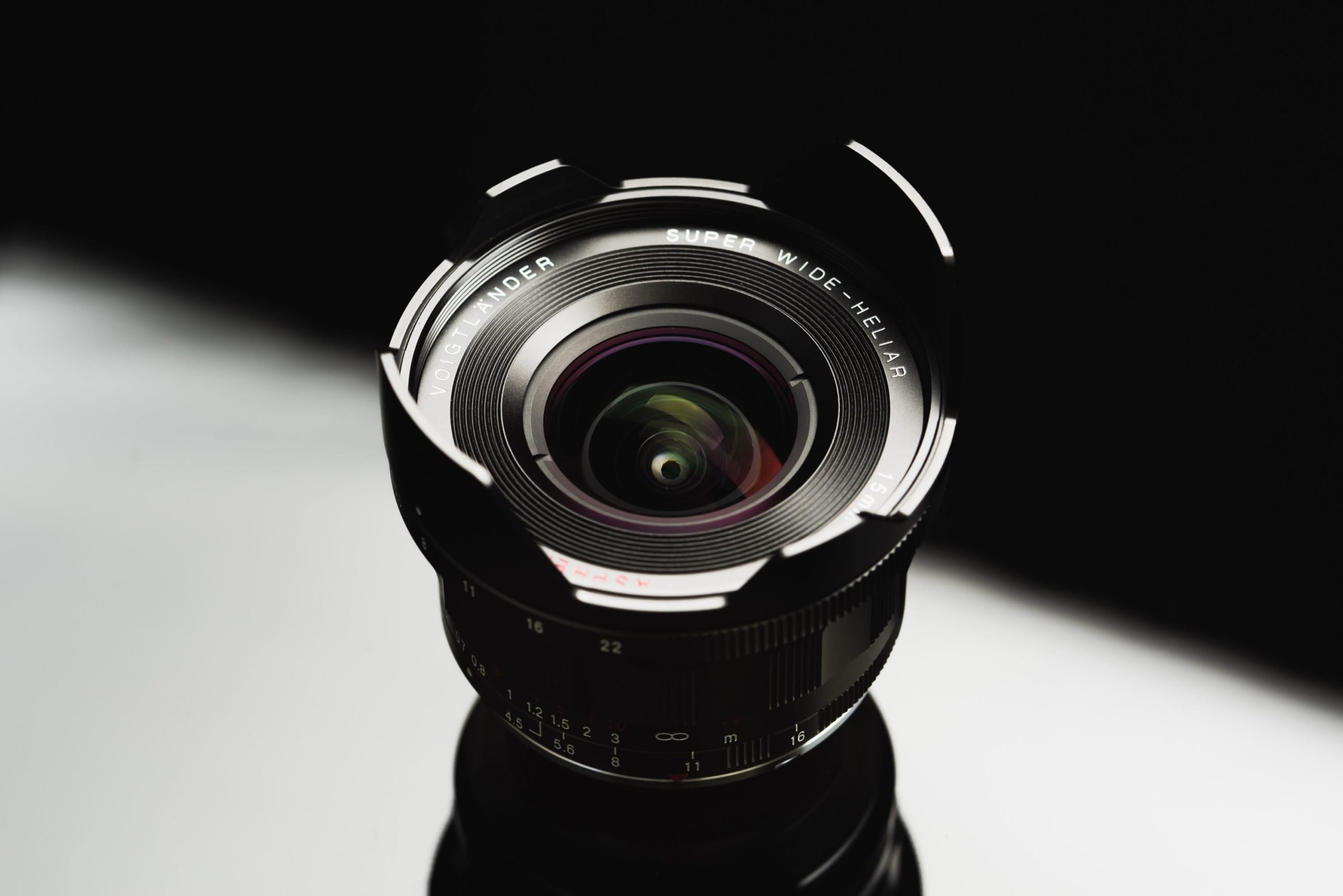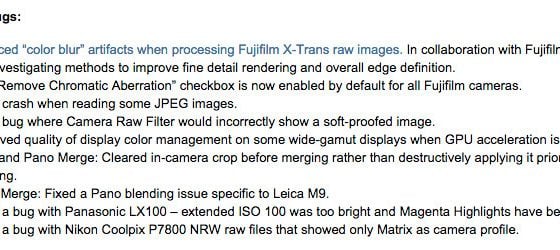The Voigtlander 15mm F4.5 lens is a Leica lens optimized for mirrorless digital sensors. This lens has an aperture of f4.5 to f22. It’s extremely small and light with full manual controls, making it an incredibly fun lens. Plus, it looks amazing.
I usually like to write what I like and don’t like about a lens, but there are very few things I don’t like about this lens. From a technical standpoint, it’s very sharp from corner to corner with little distortion. On an APS-C camera like the Fuji X-T1, the lens is near perfect and shoots at around 22.5mm (35mm comparable).
I imagine it would also pair very nicely with the Sony A6000 or one of their similar cameras.
Vignetting and chromatic aberrations are the main problems with a full-frame camera like the Sony A7r. But we’ll get into all that in this review.

Tongva Park – Sony A7rII – Voigtlander 15mm Heliar III – ISO 100, F8, 30sec
Voigtlander 15mm F4.5 Heliar III: Amazon / Adorama
Be careful if you order this lens; you are not ordering version II or version I, and some sites do not specify. The way you can tell is the lens should have a ‘III’ written on the rim.
Technical Specs
– Aperture Range: F4.5 – F22
– One Aspherical Element
– 11 Elements in 9 Group
– Manual Focus
– Minimum Focus: 1.6′ / 50 cm
– Optimized For Digital Sensors
– Built-In Hood
– 10-Blade Round Aperture
– Filter Threads: 58mm
– No Weather Sealing
The focus ring is marked for both meters and feet, and the aperture ring is on the very front end of the lens.
The lens does accept a front filter of 58mm. I like to keep one around; it helps weather seal the lens slightly, especially when you’re shooting at the beach where water and mist are in the air. However, I’ll take them off when I’m in a relatively calm area because they do tend to catch some extra light, especially when shooting in the city.

Resolution
Voigtlander did a really nice job of improving the corners and edges of this lens over version II. Sharpness is controlled very well all around from the center to the edges. It’s impressive for a lens this wide.
You do get chromatic aberrations on edge detail that aren’t all that great to deal with. You can remove them in post, but sometimes, you’re still left with this highlighted white edge.
You can see it in these resolution charts. The distortion is very minor and very easy to correct if necessary.
These were both taken on the Sony A7r with the center and edges cropped in to 100%.

I’ve tested many full-frame ultra-wide lenses, and these results are very good, especially considering how small the lens is.

Diffraction
This is how the Voigtlander 15mm f4.5 Heliar III handles diffraction on the Fujifilm X-T1. These results should be similar on the Sony A7r since both cameras have nearly identical pixel pitch – assuming I put the A7r in APS-C crop mode or cropping in 100%.
F4.5-F8 is where you want to be on this lens.
If you were shooting on a Leica, Sony A7ii, you could easily get away with shooting at f11. With the Sony A7s you could shoot up to f16 no problem. With the new Sony A7rII even F8 might start looking nasty.

Full Frame Vignetting Samples
Shot with the Sony A7r.
This might be some of the worst vignetting I’ve seen on a lens yet. Yes, you can correct it, but when you start lifting exposure on the edges by several stops like this, the color contrast tends to do strange things.
Some people like vignetting, and some don’t. I don’t mind it, but I would prefer it to be a little less extreme.
Update: Adobe’s latest update includes a lens profile for the Voigtlander 15mm Heliar III. It’s vignetting and distortion correction is perfect!
I don’t have the Heliar II, but based on how that profile corrected vignetting, I’m assuming this new lens has slightly more control over vignetting than the older one.
From other samples I’ve seen, this lens also shows a drastic improvement in edge and corner color shifts.

Corrected with Adobe Lightroom’s new Heliar III profile correction. It actually cleans up some of the chromatic aberrations as well.
APS-C Vignetting Samples
Shot with the Fujifilm X-T1.
Vignetting is well controlled on this camera. This lens is really better suited for APS-C. Overall, it has fewer problems when cropped, and I love it.

The Stars
This is my favorite part about this lens. It’s the only lens I have that gives me this awesome look. Usually, you have to shoot at f16 to f19 to get sun stars like this, but with this lens, you can get them even at f4.5.
You’ll also get it with street lamps, but they won’t be as bright and as long as when you point the thing right at the sun.

Adapting Leica M To Sony E
I used the Voigtlander Leica M and E-Mount adapter II to adapt this lens to the Sony E mount.
The adapter is very solid and very well-built. No complaints.
I’m not sure about the difference between the adapter’s version I and version II. I ordered mine from B&Hphoto, and it did not specify, so I ended up getting version II.
Adaptering Leica M to Fujifilm-X
The adapter I used to get this Leica Mount lens to work on my Fujifilm X-T1 was made by Fujifilm.
This adapter is nice because it automatically turns on “Shoot Without Lens.”
This allows the camera to pre-load any distortion, vignetting or color corrections you’ve programmed into the specific lens.
The adapter is very solid and well-built. No complaints.
Voigtlander 15mm F4.5 Heliar III Review | Bottom Line
The lens has a few flaws: intense vignetting when full-frame and some chroma on intense highlights. But because of the lens’s size, weight, and price, those issues become very, very forgivable. The new Lightroom lens profile does a fantastic job of cleaning up most of them.
Voigtlander on the Fujifilm
I love this lens on my Fuji X-T1, it’s so close to perfect. It gives a field of view equivalent to 22mm. Manual controls make it very fun to use; it’s extremely sharp with manageable chromatic aberrations. Vignetting and distortion are well-controlled so you don’t need much post correction.
If you’re thinking about buying this lens just for your Fujifilm camera, I’m not yet sure how it compares to the Fujinon XF 16mm lens. This lens is a few hundred dollars cheaper, but keep in mind you would still have to buy a Leica M to Fujifilm adapter. They can range from about 100 to 200 dollars. If all manual controls and build quality is your thing, then this lens is for you.
Voigtlander on the Sony A7r
It’s still a good lens for a full-frame camera like the Sony A7r, and I’m amazed at how small it is.
Usually, when I shoot this wide, it’s for very specific things like landscapes and architecture. Color shifts and sharpness are still very well controlled from corner to corner, something I wasn’t expecting. I’ll be using this now as my primary ultra-wide for my Sony.
Final Thoughts
There are very few options for an ultra-wide E-Mount prime at this price. There is an old Zeiss Distagon Leica M mount and a Samyang 14mm mount. But this lens is special because it’s tuned specifically for mirrorless digital cameras.
I like this lens more than my Samyang 14mm because the distortion issues on that lens are annoying. I’ve yet to try the Distagon. I’m sure Sony / Zeiss will release some new ultra-wide this year, but in the meantime, don’t ignore this lens. It’s a lot of fun; it’s small and works on most mirrorless cameras with the proper adapter. Plus it will look sick on your camera!

Voigtlander 15mm F4.5 Heliar III Sample Image
Since I shoot on both Sony E and Fuji X systems, buying Leica Mount lenses makes sense.
I like the lens on my Fuji, so I’ll post sample images of both cameras.
I’m sure the lens will also work great on Micro 4/3rds, but I’ve yet to test that. Unfortunately, you cannot adapt it to the Samsung NX unless you get out the power tools.
Sample Images – Sony A7r – Full Frame
These were shot around f8 to f11, ISO 100 with various shutters. All taken on a tripod.





Sample Images – Fujifilm X-T1 – APS-C
These were all shot between f5.6 and f8. A few were at f11, but I don’t remember going over f8 often.
These were all handheld except the long exposure shot,










| **This website contains affiliate links. We will earn a small commission on purchases made through these links. Some of the links used in these articles will direct you to Amazon. As an Amazon Associate, I earn from qualifying purchases. |







